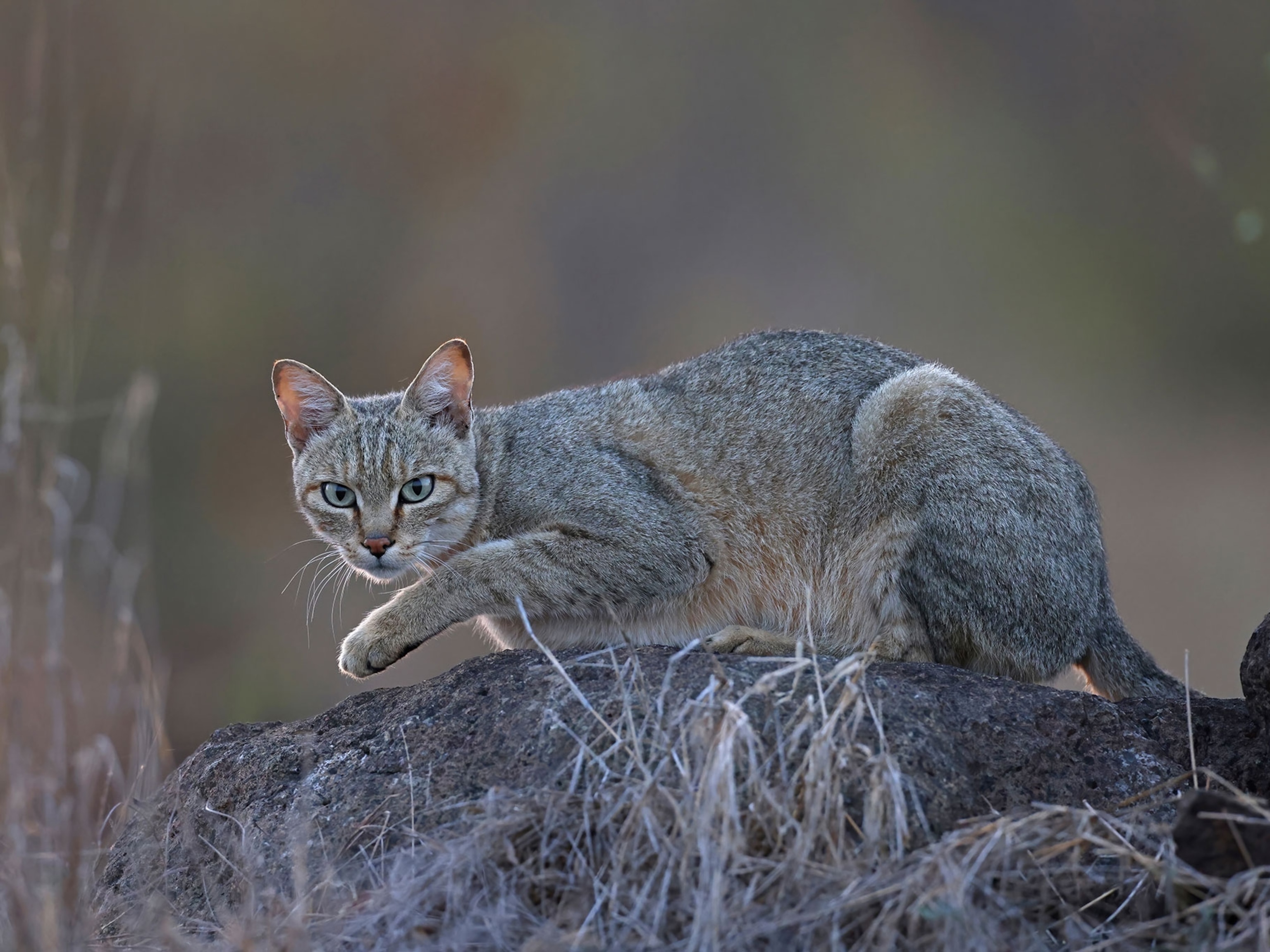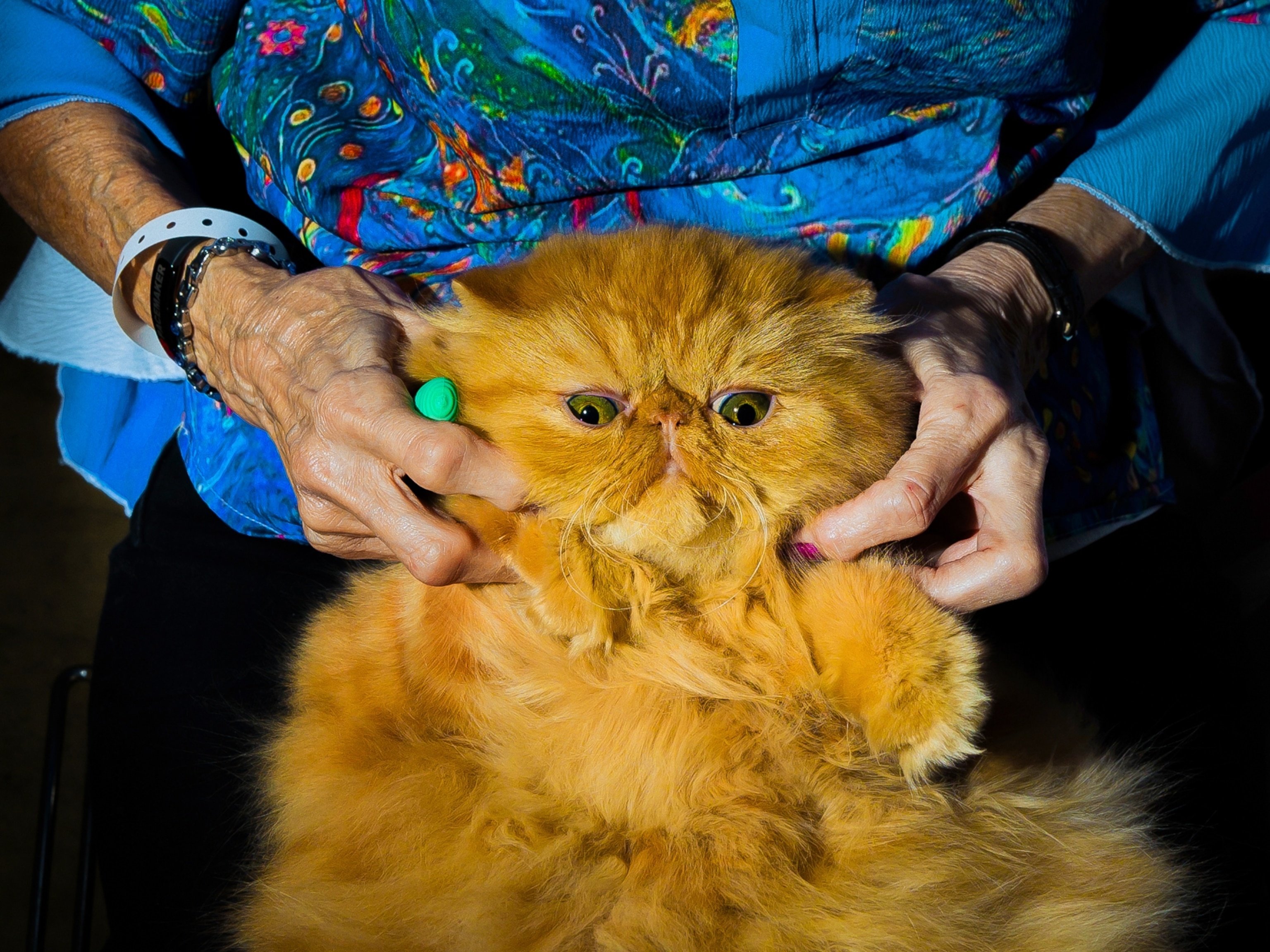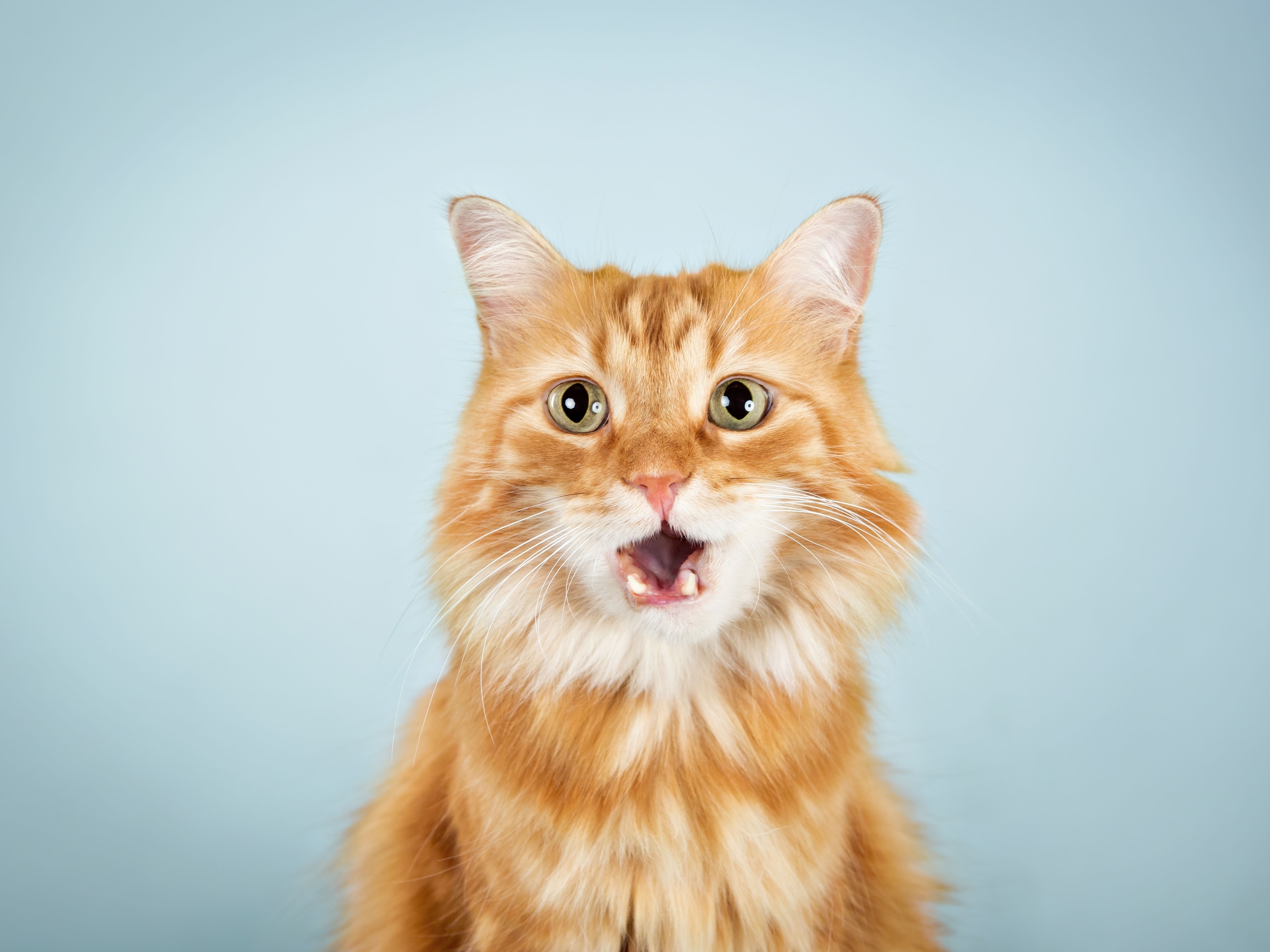
How Cats Clawed Their Way Into Our Hearts
That cuddly cat on your lap is an apex predator who can probably survive without you.
There are an estimated 600 million house cats on the planet today. To some people, they are beautiful, almost mystical creatures. To others, they are feline psychopaths responsible for the murder of billions of songbirds each year. In The Lion in the Living Room: How House Cats Tamed Us and Took Over the World, Abigail Tucker traces our long love affair with—and sometimes hatred of—cats. (Feral cats should be removed from the wild “by any means necessary,” according to some.)
Speaking from her home in Ridgefield, Connecticut, Tucker describes how Egyptian priests were the first to raise domestic cats, why YouTube sensations like Maru demonstrate typical feline behaviors, and how having a cat is one of our few chances to have a bit of the wild world in our lives. (Scroll to the bottom of the page for tips on preventing your cat from killing birds.)

Your book is filled with some mind-boggling facts. Is it really true that America’s 90 million pet cats consume three million chickens every day?
[Laughs] It’s an amazing statistic, isn’t it? There are 90 to 100 million or so pet cats in America today and a shadow population of perhaps as many stray cats. Cats can take or leave humans. They can survive within our sphere, locked in a studio apartment, or in a raw wilderness without any kind of human care. The statistics reflect that dual nature. Almost an equal population of animals live inside as outside of our homes. But wherever they live, cats are carnivores and have to have their quota of meat whether it’s sardines from a far-off ocean or rodents and songbirds in your backyard.
Our domestic relationship with cats goes back thousands of years and seems to be linked inextricably with our worship of them. Tell us about the Egyptian goddess Bastet and how she relates to modern cat domesticity.
Bastet was an Egyptian goddess with the head of a cat, who became supremely important in late Egypt. She began her divine tenure at a time when farming intensified and environmental degradation increased. So over time, the domestic cat became more important. The catteries at the temples of Bastet are our first efforts at raising cats in a manner of animal husbandry. Priests raised large quantities of house pets. It’s not totally clear why. And it seems they were also killing the cats in an organized way. Some people have suggested it was a form of humane population control.
So the culture was simultaneously engaged in adoring house cats and throttling them behind closed doors. You see a similar thing in modern culture. We love cats and have a worshipful attitude towards them. But in America today about two million healthy house cats are euthanized per year because we don’t have a solution for what to do with them. That tension between public passion and private violence reminds me of the Egyptians. [Peek inside cat mummies with new x-ray images.]
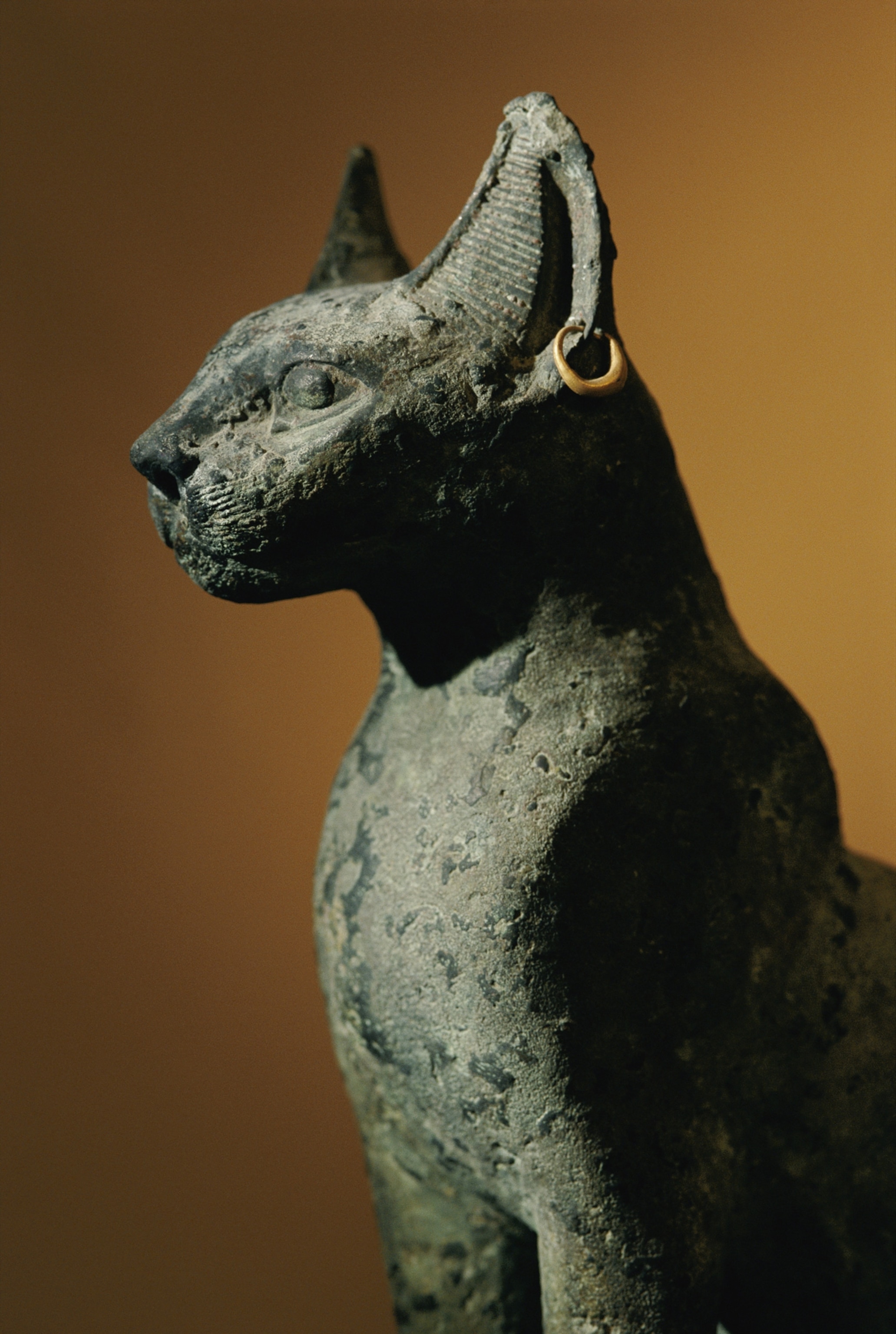
Historically, cats have been accused of everything from killing babies to bewitching people, but there may be more science to those fantasies than we once thought. Explain what science is telling us about cats’ demonic mischief.
Cats are elegant, wonderful, amazing animals. But there are some strange things they do to us that, maybe, could have been confused with witchcraft back in pre-Enlightenment times. Sometimes, in witch trial cases, a cat would show up and people would start to have trouble breathing. But, as some animal scientists have pointed out, that could have just been evidence of cat allergies.
We see an echo of the idea that cats are working some kind of black magic on us in toxoplasmosis studies. Some researchers argue that a parasite that cats spread can change human behavior in unforeseen ways. I think all these ideas are our way of trying to come up with a reason for why we have 600 million house cats on the planet today. [Laughs]
Cats aren’t just cute and fluffy house pets; they are classified as one of the world’s 100 worst invasive species. The Australian Wildlife Conservancy has even dubbed cats “the ecological axis of evil.” What’s their beef?
Cats are extremely adaptable and good at getting along in all kinds of different environments, with and without humans. Australia, in particular, is one of these places where they run roughshod over the ecosystem. There’s something like 18 million stray and feral cats in Australia. They’re damaging because Australia doesn’t have any native feline predators. That means wildlife, particularly marsupials, are really susceptible to toxoplasmosis.

Cats have participated in the extinction of an astounding number of Australian animals, especially small mammals. Today, the government is trying hard to eliminate cats from the landscape and is even involved in the invention of new cat poisons and gory things, which are upsetting to cat lovers. But cats have really got their claws into Australia. [Laughs]
There are a number of ways of trying to control the feral cat population humanely. Why doesn’t TNR (trap, neuter, return) work and what is wrong with cat colonies?
Cats are incredibly good at breeding and are excellent mothers in the wild, which distinguishes them from dogs. Puppies often die on the street, and wild packs of dogs are often sustained by recruitment, rather than generations of breeding within dog colonies. Cat colonies, on the other hand, can go on autopilot and create generations of alley cats. This has been a problem in American cities for at least a hundred years. People did ghastly things, like drown or gas huge numbers of alley cats.
Since then the philosophy has shifted toward trapping, neutering, and releasing cats that then live in colonies. The idea is, if you can stop them from breeding, you can let these animals live peacefully and die a natural death. But people on the other side, who are into birds or are avian scientists, say that trapping, neutering, and releasing isn’t an effective means and that [cats] still need to be euthanized according to the old, somewhat barbaric, model of killing huge numbers of cats.
People on both sides are passionate animal lovers who want the best for the Earth but cannot agree. What needs to happen is for people on both sides of the equation to get together and work on the problem.
When asked what most surprised him about modern web usage, Tim Berners-Lee, father of the Internet, said “kittens.” Tell us how and why house cats are conquering YouTube.
The phenomenon of cats on the Internet is an extension of the lifestyle of cats. The cat in your lap or your yard is a meat-eating machine: an apex predator and hyper-carnivore that requires huge amounts of meat to sustain itself. Even online, where there is obviously no eating or meat, that lifestyle still holds true.
A lot of the things we see online, which we like so much, are different forms of feline hunting behavior. Maru, the famous cat who is constantly popping in and out of boxes, demonstrates pouncing behavior, a classic predatory move. Cats are stalkers, which explode out of places to jump on things. And that is the essence of a successful YouTube cat video.
Many people argue cats should be kept indoors to protect bird populations. Talk to us about bird death tolls and what cat owners can do to stop the slaughter.
In 2013, federal scientists determined that cats killed 1.3 to four billion birds per year. There’s not much you can do about that so, if it concerns you, keeping your cat indoors is a good option. But that has its drawbacks for the cat. I always thought of an indoor cat as living in the lap of luxury, totally spoiled, the envy of all cats in the world. Nothing could be further from the truth, though.
Cats—half-domesticated animals—experience a lot of stress from being trapped inside our houses. They’re bored, as they don’t have the things that an apex predator requires. They don’t have their own territory. Many develop behavioral problems and can get very aggressive toward their owners.
There’s a famous 911 call in Portland, Oregon, when Lux, a black-and-white Himalayan cat, trapped this whole family because he went totally psycho against the family’s baby. They became so frightened that they barricaded themselves into a room and called 911. The tape of that 911 call went viral because it was so unexpected.
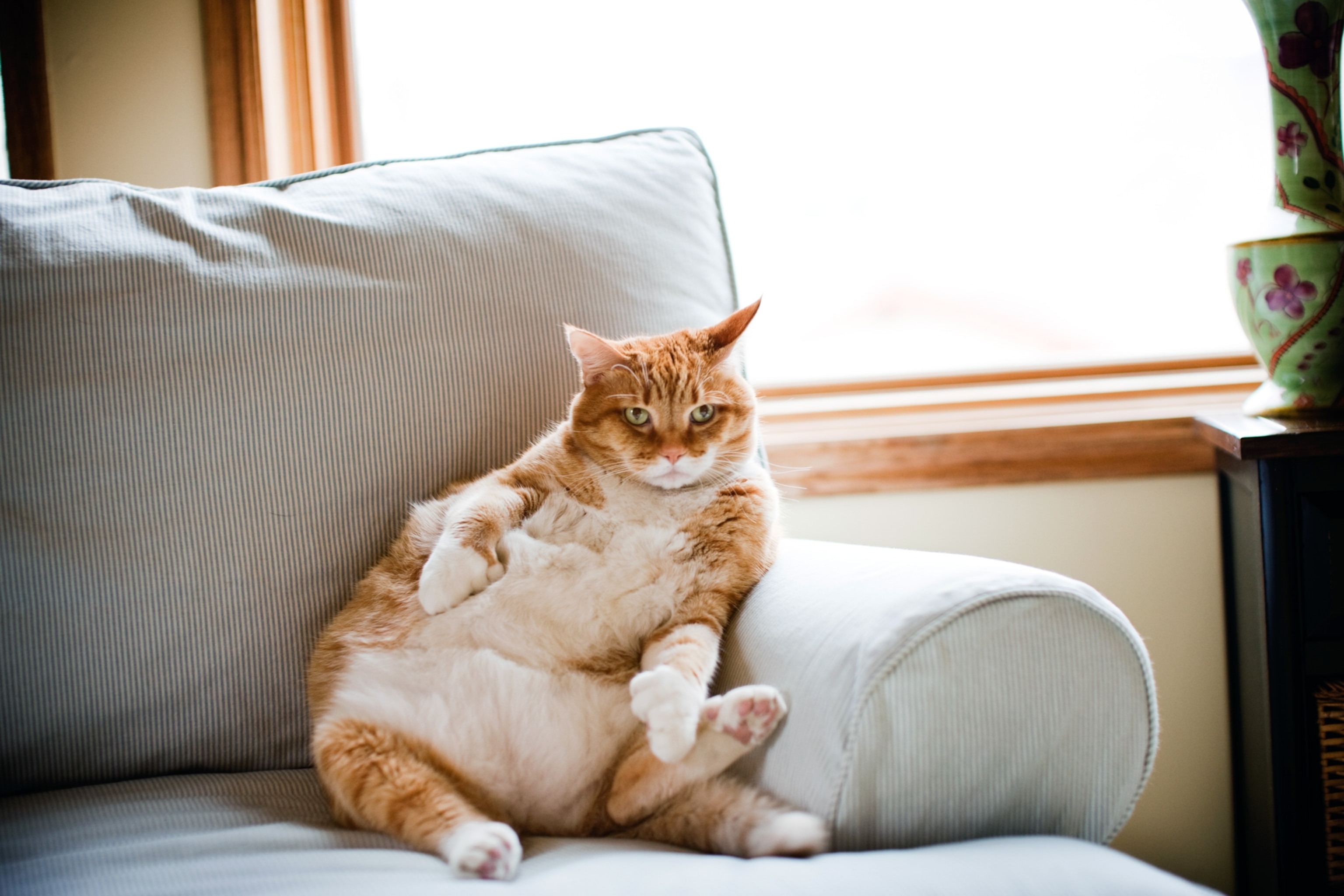
Do you have a cat yourself? Introduce us—and explain what you love about it.
My adorable Cheeto, who was my cat when I was writing my book, has sadly died recently. I got him as a kitten while on a newspaper assignment in a mobile home community in upstate New York, where they had a cat colony. Some people let the cats come into their houses or sleep on their couches but they didn’t belong to anybody. They had these two gorgeous orange kittens and the people asked if I would like one. One of them became my Cheeto.
He was a neutered male, who was very Garfield-esque in his appetites. That was another thing I was totally floored by in my research. Recently, American cats have gotten so obese that vets have been forced to throw out their feline obesity index, which previously had only gone up to about 45 percent body fat, for a new chart that goes to 70 percent body fat. Cats are becoming blimps with legs, which is probably a reflection of this indoor lifestyle thing. We try so hard to commune with these mysterious animals and one of the best tools we have is feeding them.
What I miss most about Cheeto is that my children can no longer experience him. In the modern world we have hardly any daily connection with animals, apart from going to the grocery store and picking up a package of chicken breasts. Having an animal that has one foot still in the wild, like a cat, is incredibly educational for children and a way to remember that we humans aren’t the only beings on the planet.
This interview was edited for length and clarity.
Simon Worrall curates Book Talk. Follow him on Twitter or at simonworrallauthor.com.
How to Prevent Your Cat From Killing Birds
- Trim your cat’s claws every couple of weeks so they are less deadly.
- Use a double-belled collar for particularly active hunters.
- Never allow your cat outside before 8 a.m., when birds are feeding.
- In the spring and early summer, keep your hunter inside during fledging, which is the two weeks or so when baby birds are learning to fly.
- Protect nests in your yard by wrapping plastic fencing around tree trunks and branches so your cat can’t reach them.




